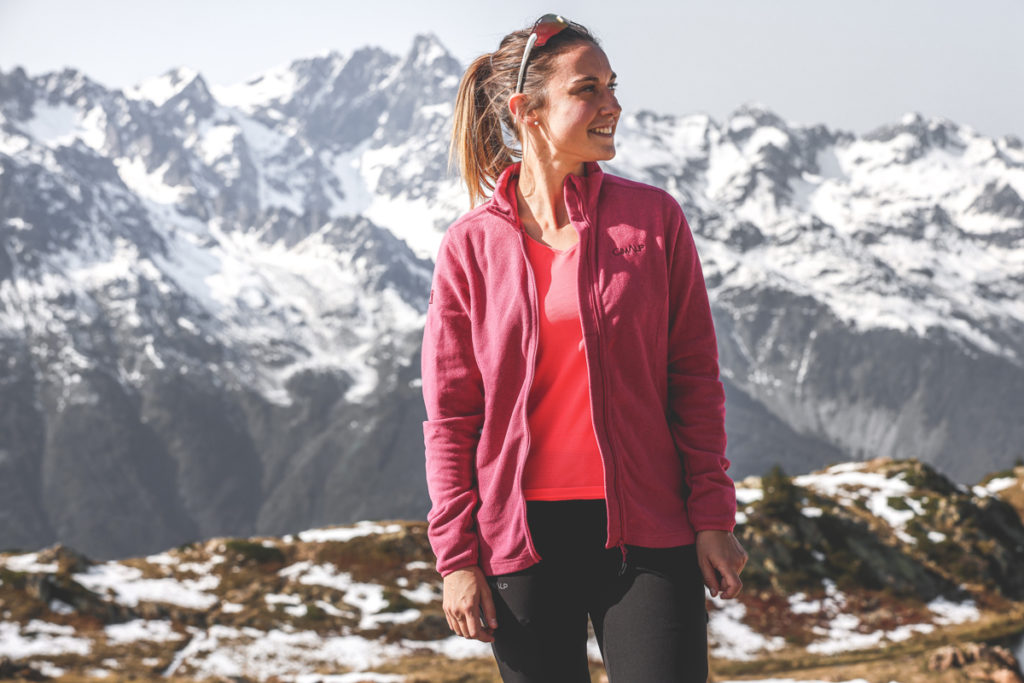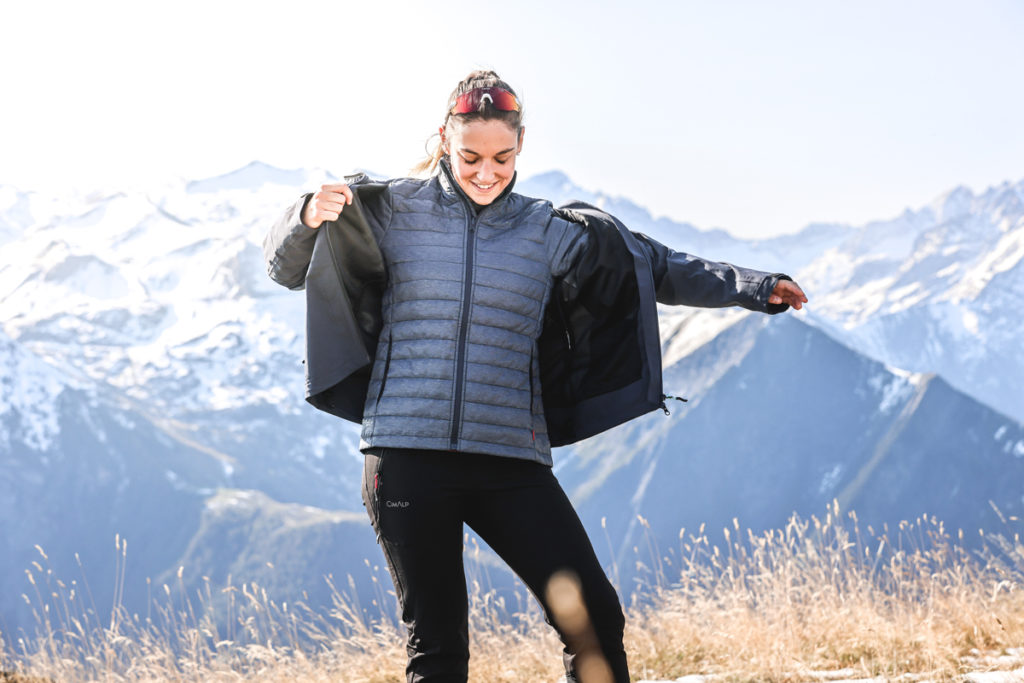The three-layer system for hiking
The three-layer system has been adopted by a large number of outdoor enthusiasts as a method of optimal clothing. The aim is to use a minimum of clothing for maximum efficiency. This method wicks away sweat, keeps you warm and protects you from the weather. Let's find out what clothes to wear to make the best use of the three-layer system for hiking.

A breathable first layer
The first layer is called the base, transfer or comfort layer. It is in contact with the skin and its purpose is to keep your skin dry. It is breathable, absorbs moisture, wicks away perspiration and prevents you from feeling cold.
When buying your base layer, you can choose a synthetic or natural fibre material. Garments made of synthetic fibres have a highly technical aspect: they do not absorb water, regulate the temperature without feeling cold and have the advantage of drying very quickly. They are ideal for intense effort. Garments made of natural fibres such as merino wool are warmer and absorb moisture well. They limit the development of odours better than synthetic garments. They are more suitable for cold weather, at high altitudes or for trekking for a few days.
A second insulating layer
The second layer is a middle layer that insulates from the cold outside and retains body heat. Its insulating power comes from its ability to trap air in the fibres. The middle layer must both keep warm and transfer moisture to the outer layer.
Hikers usually use synthetic fibre clothing (fleece) or down (down jacket) as a second layer. Fleece is perfect for cold weather. It provides both warmth and good wicking. They are available in different weights and can be adapted to each season and activity. The down jacket is also a good choice for cold and dry weather. It has the advantage of being light, compact and warm. We don't recommend taking it with you in wet weather, as it loses its insulating power and needs time to dry.
A third protective layer
The third outer or protective layer is in contact with the outside. It must be breathable, waterproof, windproof and strong enough to withstand the elements.
Investing in a technical jacket with a waterproof-breathable membrane such as Gore-Tex® or similar is a good idea. As well as protecting you from the weather, your third layer allows you to wick away perspiration from your body. Its windproof effect prevents heat loss. The waterproof jacket can accompany you on all your hikes, all year round.

Adaptation of the three-layer system to the hike
The advantage of the three-layer system is that it can be adapted to the weather, the outside temperature and the type of hiking. For example, you can only combine a base layer and a protective layer if it is windy and not cold. In the opposite case, if it is sunny, cold, but not windy, you can wear a base layer plus a mid-layer.
Some garments are a condensed version of the three-layer system. The 3-in-1 jacket can be an excellent choice as it has both wind and moisture protection and good thermal insulation. Finally, the softshell can be used as a second and third layer in case conditions are favourable (without severe weather). The three-layer system for hiking is not only suitable for the upper body. It can also be used for other parts of the body, such as the lower body (e.g. a combination of tights, hiking trousers and overpants for rain protection). The three-layer system is perfectly suited for hiking, where the body goes through several states depending on the activity.
